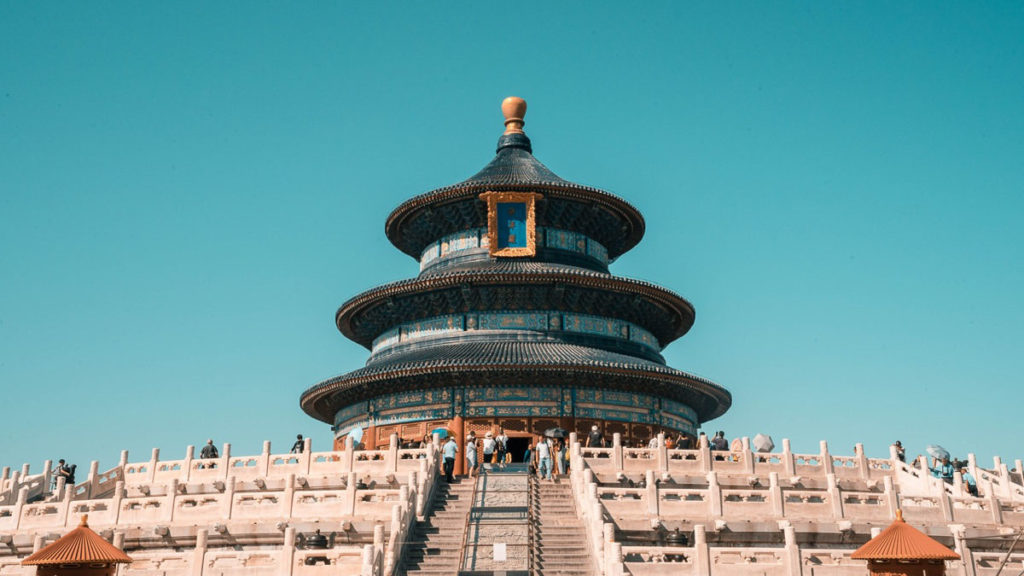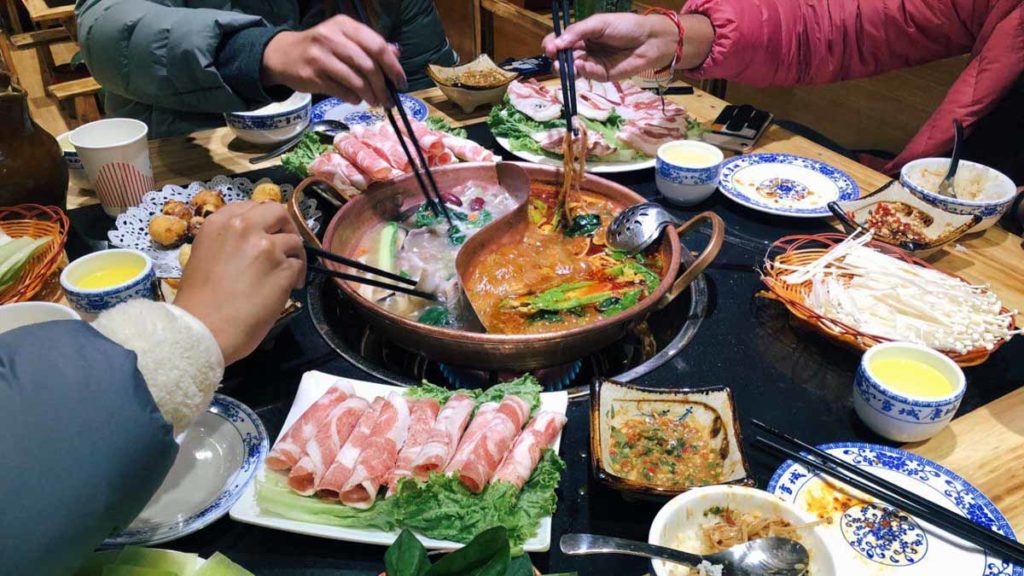China is the world’s third largest country by area and cities like Shanghai and Beijing just cover a mere fraction of it! Venture beyond the China you know with these lesser-known places.

We love visiting China, having done a few long trips like a rail journey from Beijing to Suzhou and a two-week trip exploring cities in the Yunnan province!
But we still feel like we’re barely scratching the surface of a country so large with 707 cities (it’s almost the same size as the European continent) and is filled with so much culture, landscapes and history.

In case you missed it, China and Singapore extended their mutual visa-free arrangement from 15 to 30 days starting from 9 Feb 2024. This means there’s now more time for longer trips and exploring additional cities, especially with the cities being interconnected by high-speed trains.
If it’s your first time visiting China (or you haven’t been there in a while), we’ve compiled a list of lesser-known places you should travel to, plus travel tips covering essentials like insurance and internet connection. More details at the end!
1) Zhangye National Geopark

Photo credit: @your_navigation via Instagram
Province: Gansu
Nearest airport: Zhangye Ganzhou Airport
If Mother Nature was an artist, Zhangye National Geopark might be considered one of her most brilliant works. Vast hills are painted in vibrant colours due to the presence of various rock types, formed by the movement of tectonic plates over millions of years. Hence the nickname “Rainbow Mountains”!
This national park is located in Gansu province in the northern part of China. To preserve the landscapes, hiking isn’t allowed. However, there are four viewing platforms offering different vantage points of the rock formations. The bus drop off spots are close to the viewing points, so it’s just a few minutes walk.

Photo credit: @riya.basu via Instagram
Within Zhangye National Geopark, check out Binggou Danxia Park, a series of rust-red sedimentary rock formations that have supposedly been around since the Jurassic period. There’s also the Pingshan Lake Grand Canyon (above) — it’s not as famous as Arizona’s Grand Canyon, but it’s just as amazing!
2) Zhangjiajie

Photo credit: @sortino via Unsplash
Province: Hunan
Nearest airport: Zhangjiajie Hehua Airport
Zhangjiajie National Park, often known as the Avatar mountains (see the similarity?), is China’s first national forest park established in 1982. It was pretty much a hidden gem to the rest of the world until 2009, when the first Avatar movie was released. That’s because Zhangjiajie National Park inspired the iconic Hallelujah Mountains in the movie!

Another star attraction of the park is the 326m-tall Bailong Elevator, which holds the Guinness World Record for the world’s tallest outdoor lift! This glass-wall elevator covers 3m in just a second — taking a minute and 58 seconds to reach the top!

Photo credit: @yoshikei_hongkong via Instagram
Be sure to visit Tianmen Mountain (Heaven Gate Mountain), the highest mountain in Zhangjiajie at 1,519m. You can take a cable car up and enjoy panoramic views of the city and its surroundings!
Read also: 12D Central China Itinerary — Things to do in Wuhan, Changsha & Zhangjiajie
3) Shangri-la

Province: Yunnan
Nearest airport: Diqing Shangri-La Airport
In the Cambridge dictionary, Shangri-La refers to an imaginary, faraway paradise. But in fact, Shangri-La does exist, in China’s Yunnan province!
Yunnan is China’s southwestern province and it offers a vastly different experience from the rest of China. It’s home to 26 different ethnic groups (the most in any province in China!) and enjoys a year-round spring-like climate due to its average altitude of 2,000m.
Read also: 9 Reasons Why Yunnan Should Be On Your Travel Bucket List

A must-see in Shangri-La is Songzanlin Lamasery, Yunnan’s largest Tibetan Buddhist monastery. Its location was chosen by the fifth Dalai Lama back in 1679 and is now an iconic place of worship among Buddhists. To get to the heart of the monastery, you’ll have to climb up 146 steps!

While in Shangri-la, take some time to explore Dukezong — a Tibetan town in the heart of the city. After checking out the winding alleyways and local shops, try Tibetan hotpot, which features black goat meat (a Yunnan speciality!) and Tibetan spiced pork.
Read also: 12D Yunnan Itinerary: China’s Best Kept Secret — Kunming, Dali, Lijiang, Shangri-la
4) Yangshuo

Photo credit: @beyondxphotography via Unsplash
Province: Guangxi
Nearest airport: Guilin Airport
Head to Yangshuo County in Guilin and you’ll be greeted by towering karst hills along the Li River. Don’t miss Xingping Old Town — a fishing village along the river with over 1,700 years of history, where fishermen fish with their cormorant birds. These birds dive into the water to snatch fish!
The most photographed spot here is the “Reflection of Yellow Cloth Shoal” (above) — the landscape featured on the 20 yuan note.

Photo credit: @blackjiawen via Instagram
This underrated gem in China is more than just a photographer’s dream; there’s also plenty to do for adventurers. Kayak along the Li River, go rock climbing (Yangshuo is China’s hotspot for natural rock climbing), hike up TV Tower mountain or explore some caves in the area.
5) Kashgar

Photo credit: @kashgar.city via Instagram
Province: Xinjiang
Nearest airport: Kashi Laining International Airport
Kashgar doesn’t sound like a name for a Chinese city, because it’s not your typical Chinese city. It’s located in the westernmost corner of China, bordering Afghanistan, Kyrgyzstan, Tajikistan and Pakistan — resulting in a blend of East and South Asian cultures. The majority of people in Kashgar are Uyghurs, a Turkic ethnic group native to Xinjiang.
This city was a major trading hub along the Silk Road due to its fertile land and prime location. Start your Kashgar itinerary by touring the old town and visiting the Kashgar Century-Old Teahouse, which is run by a fifth-generation household. It’s where locals enjoy tea and Nang (a local flatbread) and was also featured in the 2007 film The Kite Runner.

Photo credit: @nicoletien via Instagram
After that, visit the famous Id Kah Mosque, which has been around since 1442. It’s Xinjiang’s largest mosque, with the capacity to hold 20,000 people during the annual Qurban Baiyram (Eid).
On Sundays, there’s the Kashgar Livestock Market. Cattle, sheep, camels, and donkeys are herded into the city centre and boisterous haggling takes place to secure the best livestock. Quite the unique experience!
6) Jiuzhaigou Valley

Photo credit: @thelightnight via Unsplash
Province: Sichuan
Nearest airport: Jiuzhaigou Airport
Step into nature’s paradise at Jiuzhaigou — a 72,000-hectare protected nature reserve in Sichuan province. That’s around the size of Singapore! It’s got rich wildlife and is home to 140 bird species, plus a number of endangered animals like the giant panda. Fun fact: It was also named a UNESCO World Heritage Site in 1992.

Photo credit: @wenhao_ruan via Unsplash
The national park is made of three valleys — Rize, Shuzheng and Zechawa. Each has several beautiful lakes and waterfalls! Must-see spots include Nuorilang Waterfall (300m wide), Five Flower Lake (one of the park’s most colourful lakes) and Pearl Beach Waterfall (the park’s highest waterfall at 40m tall).

Photo credit: @travelnugget11 via Instagram
Just a 2.5-hour drive from Jiuzhaigou Valley is Huanglong Scenic and Historic Interest Area, so the two are often paired together on a trip to Sichuan. Huanglong translates to “Yellow Dragon” and the park earned this name due to its travertine (type of stone) formations that look like a golden dragon. It’s also known for its permanently snowcapped peaks, limestone formations and hot springs!
7) Xi’an

Photo credit: @onevibe via Unsplash
Province: Shaanxi
Nearest airport: Xi’an Airport
Formerly China’s capital city over several dynasties, Xi’an holds a wealth of history and incredible sights. The capital of China’s Qin Dynasty (221-206 BC) was just north of Xi’an — and it’s where the famous mega tomb complex with 8,000 terracotta statues was discovered.
One of the best things to do in Xi’an is to cycle along the Xi’an Ancient City Wall. It’s supposedly the best-preserved ancient city wall in China, stretching for almost 14km around the city.

Photo credit: @fayfeixie via Unsplash
While visiting Xi’an, take a day trip to hike at Mount Huashan, just a 2-hour drive away! You’ll definitely get a good workout, as the trail includes plenty of steep ascents — but the views are worth the effort.
Planning Your First Trip to China
1) Useful apps to download

Trust us, travelling in China will be a lot smoother with these commonly used mobile apps.
– WeChat: A messaging, social media and mobile payment app. You might need this to contact local tour operators or drivers!
– Didi: China’s main ride-booking app
– Baidu Maps: China’s version of Google Maps
Read also: Mobile Payment in China: Step-by-step Guide to Using Alipay and WeChat Pay without a Chinese Bank Account and 10 Essential Apps You Must Have for Travelling in China
2) Travel insurance

It’s 2024; are you really still travelling without buying insurance? Travel can be unpredictable, and being covered ensures you can recover costs for trip cancellation, flight delays, missing baggage or medical issues. This is especially crucial if you’re going to be doing a lot of inter-city travel in China!
If you’re looking for insurance options for upcoming trips, Singlife is offering discounts on travel insurance! Get 28% off single trip plans from 1–7 Mar 2024. Plus, MINDEF, MHA and POGIS-insured members (and their family) also enjoy an additional 30% discount on top of any ongoing promotions!

Here’s why Singlife Travel Insurance^ is worth considering:
– Covers trip cancellation for any reason*
– Default Covid-19 coverage for all plans
– Unlimited overseas medical coverage with the Prestige plan
– Covers the loss of frequent flyer points
– The only travel insurance in the market that offers rainfall protection**, with up to S$150 payout
*Available for Travel Plus and Prestige plans
**For single trips (minimum 3 days) where more than 50% of trip duration is affected by rainfall levels of >6.4mm in a 24-hour period
Head to their website to get a quote for your upcoming trips.
3) Internet connectivity and VPN

You’ve probably heard of “The Great Firewall of China”, which blocks foreign websites like Instagram, WhatsApp and Google in China. To access these apps, you’ll need a VPN! There’s two ways to do this — by downloading a VPN app like NordVPN, or getting a SIM card that includes VPN service (from S$4.50 for 3 days, 300MB daily).
Looking for more China travel inspiration? Check out our China guides and itineraries:
– 4-Day Hainan Itinerary Under S$650 — A Short Island Getaway to the Hawaii of China
– Yunnan Nature Bucket List For Outdoor Lovers — Best Spots in Kunming, Lijiang, Dali & Shangri-la
This post was brought to you by Singlife.
^Disclaimer: These policies are underwritten by Singapore Life Ltd (“Singlife”). The Travel Intern is not an insurance agent/intermediary and cannot solicit any insurance business, give advice, recommend any product or arrange any insurance contract. Please direct all enquiries to Singlife.
This material is published for general information only. This material is not an insurance contract. Full details of the standard terms and conditions of this policy can be found in the relevant policy contract. Protected up to specified limits by SDIC.














